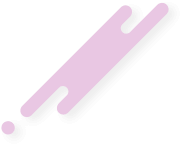Introduction
In the rapidly evolving world of business technology, companies face a critical decision: should they invest in Software-as-a-Service (SaaS) or stick to traditional software? Each model has its strengths, costs, and long-term implications for performance and scalability.
At Givni, a leading software development company, we work with businesses across industries to design, implement, and optimize both SaaS and traditional systems. Our goal is simple — to help you choose the model that perfectly aligns with your goals and operations.
Let’s explore what each software model offers, their pros and cons, and which one suits your business best.
1. Understanding the Basics
What Is SaaS?
SaaS (Software as a Service) refers to cloud-based software that users access via the internet. Instead of installing applications on local devices, businesses subscribe to these platforms — typically paying a monthly or annual fee. Examples include Google Workspace, Salesforce, and Zoom.
SaaS applications are hosted by a provider like Givni, who manages all updates, maintenance, and security.
What Is Traditional Software?
Traditional software (also known as on-premise software) is installed directly on a company’s computers or servers. Businesses purchase a license, install the software, and handle their own updates and maintenance.
This model offers full control over data and customization but often comes with higher upfront costs and longer setup times.
2. Key Differences Between SaaS and Traditional Software
| Feature | SaaS | Traditional Software |
|---|---|---|
| Deployment | Cloud-based, accessible online | Installed on local servers or devices |
| Payment Model | Subscription (monthly/annual) | One-time license fee |
| Maintenance | Managed by provider | Managed by in-house IT team |
| Accessibility | Anywhere, any device | Limited to specific systems |
| Scalability | Highly flexible | Requires hardware upgrades |
| Security | Handled by vendor | Managed internally |
| Updates | Automatic | Manual installation required |
Understanding these differences helps you assess which solution aligns best with your company’s structure and resources.
3. Advantages of SaaS
SaaS has become the go-to model for modern businesses because of its flexibility and scalability. Here’s why:
a. Low Upfront Costs
There’s no need to invest in expensive hardware or long installation processes. With SaaS, you pay only for what you use.
b. Easy Accessibility
Access your data and tools from anywhere — whether you’re in the office, at home, or traveling.
c. Automatic Updates
SaaS providers like Givni manage all software updates, patches, and backups automatically, reducing downtime.
d. Seamless Collaboration
Cloud-based tools make it easy for teams across different locations to work together in real-time.
e. Scalability
You can quickly upgrade or downgrade your subscription as your business needs evolve.
4. Advantages of Traditional Software
While SaaS dominates the modern market, traditional software still holds strong advantages for certain businesses:
a. Complete Control
With on-premise software, you have full control over how and where your data is stored and managed.
b. Strong Customization
Givni’s traditional software development allows businesses to deeply customize tools according to internal processes.
c. Data Security and Compliance
For industries like finance, defense, or healthcare — where data confidentiality is critical — in-house servers offer more control and compliance flexibility.
d. Long-Term Ownership
Once purchased, you own the license forever, avoiding recurring subscription costs.
5. Challenges of Each Model
SaaS Challenges:
-
Dependence on internet connectivity
-
Limited customization in some cases
-
Data storage concerns with third-party servers
Traditional Software Challenges:
-
High initial setup and maintenance costs
-
Manual updates and IT dependency
-
Limited remote access and scalability
6. How Givni Helps Businesses Choose the Right Model
At Givni, we believe there’s no one-size-fits-all solution. Every business has unique needs, and our experts analyze your goals before recommending the right software strategy.
We help you decide by evaluating:
-
Your team size and technical capacity
-
Data sensitivity and compliance needs
-
Budget and long-term ROI goals
-
Scalability and remote access requirements
Whether you choose a SaaS platform or a traditional on-premise solution, Givni ensures the implementation is seamless, secure, and fully optimized for your business workflow.
7. Hybrid Approach: The Best of Both Worlds
Many modern enterprises are adopting a hybrid software model, combining SaaS and traditional software for maximum efficiency.
For example:
-
A company might use SaaS-based CRM and communication tools for collaboration.
-
At the same time, it may keep sensitive accounting or ERP systems on-premise.
Givni helps businesses design and integrate such hybrid models — offering flexibility, control, and cost efficiency in one setup.
8. Cost Comparison: SaaS vs Traditional
| Aspect | SaaS | Traditional Software |
|---|---|---|
| Initial Cost | Low | High |
| Maintenance Cost | Included in subscription | Ongoing IT expenses |
| Hardware Requirements | None | Requires infrastructure |
| Upgrades | Automatic | Manual |
| Long-Term Cost | Subscription-based | One-time investment, long-term maintenance |
With Givn







